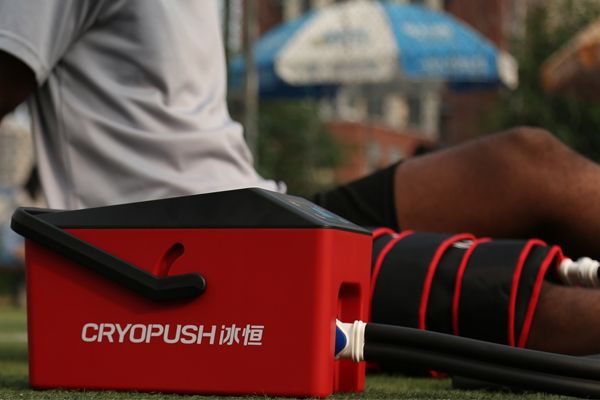
If you have scheduled shoulder surgery, you’re likely wondering, “How long until I can get back to my regular activities?” While this is a common question, there’s more to shoulder surgery recovery than just regaining mobility. Even after you can move your arm without much pain, your body will continue healing, and the recovery process will still be ongoing. For most people, it takes 3 to 6 months to recover from shoulder surgery, but the timeline can vary significantly depending on the type of surgery and individual factors.
Your surgeon will provide a detailed recovery plan tailored to your condition, but in general, the following timeline and rehabilitation tips can help you recover as quickly and safely as possible.
Shoulder Surgery Recovery Timeline
Every recovery is unique, but here’s a general idea of what you can expect during shoulder surgery recovery:
The First 2 Weeks After Surgery
The first two weeks are critical for recovery. Your shoulder will be particularly vulnerable during this period, and you may experience pain, swelling, and reduced mobility. Immediately after surgery, your body’s natural response will include inflammation around the shoulder joint, and rehabilitation typically begins right away. Your doctor may prescribe specific exercises to support your recovery, which should be performed daily. During this time, you’ll likely need to wear a sling to immobilize your shoulder and protect it from unnecessary movements.
Rehabilitation tips to try:
- Apply therapeutic cold to reduce swelling and pain.
- Perform gentle shoulder movements as recommended by your physical therapist to maintain some mobility.
- Practice proper posture to avoid strain on the recovering shoulder.
- Use a sling to limit shoulder movement and protect the healing tissues.
2-6 Weeks After Surgery
At this stage, you may start regaining some shoulder movement, though you’ll still need to be cautious. Rehabilitation will likely focus on passive exercises that gently move the shoulder joint without straining it. Your physical therapist will guide you through exercises designed to improve your range of motion without stressing the tissues.
Rehabilitation tips to try:
- Continue cold therapy treatments every few hours to manage swelling and pain, especially after physical therapy sessions.
- Begin gentle stretching exercises to enhance shoulder mobility.
- Add light, passive shoulder movements as advised by your physical therapist.
- Maintain good posture to prevent strain on the shoulder.
6 Weeks to 3 Months After Surgery
As your shoulder continues to heal, you’ll gradually regain more range of motion and begin introducing light strength training exercises. This is a crucial phase where your shoulder starts to regain its strength, but it’s important to be patient and avoid overexertion. Depending on your progress, your physical therapist may also start incorporating more active exercises.
Rehabilitation tips to try:
- Gradually introduce strength training exercises such as shoulder abductions and external rotations.
- Practice gentle resistance exercises with a resistance band to improve muscle strength.
- Continue regular cold therapy to manage any inflammation and pain.
3-6 Months After Surgery
During this time, many patients feel closer to normal, but it’s still important to be cautious and follow through with your rehabilitation plan. Your physical therapist might introduce more dynamic and sport-specific exercises, depending on your goals and recovery progress. Some patients are cleared to resume activities such as swimming, golfing, or tennis during this period.
Rehabilitation tips to try:
- Focus on sport-specific training to help you transition back to your favorite activities.
- Incorporate strength and flexibility exercises to ensure balanced shoulder movement.
- Use a supportive brace if recommended by your physical therapist, especially during high-impact activities.
Even after six months, some patients may need ongoing exercises to maintain shoulder strength and prevent future injuries. Consult with your doctor or physical therapist to determine if additional precautions, such as using a brace, are necessary.
Shoulder Surgery Recovery Tips
Recovering from shoulder surgery can be a long and challenging process, but there are strategies you can use to support your healing:
Be Patient and Follow Your Rehabilitation Plan
It’s tempting to push yourself, especially if you’re eager to return to work or sports. However, doing too much too soon can actually hinder your recovery and increase the risk of re-injury. Follow your physical therapist’s recommendations about which exercises are appropriate and how much you should be doing. If you feel capable of doing more, check with your therapist before increasing the intensity of your workouts.
Use Cold Therapy to Reduce Swelling and Pain
Pain and inflammation are often at their peak during the first few weeks following surgery. Applying cold therapy can help minimize swelling and naturally control pain, especially during the early recovery phase. Devices like the Cryopush cold therapy machine, which combines active compression with cold therapy, can be particularly effective. Active compression helps to pump away excess fluid, while cold therapy can penetrate deeper, providing long-lasting relief. Continuing to use cold therapy throughout your recovery may also help reduce discomfort and promote healing after physical therapy sessions.

Conclusion
Shoulder surgery recovery requires patience, effort, and consistency. Following your rehabilitation plan and using strategies like cold therapy can help accelerate healing and make your recovery journey smoother. Remember to consult with your doctor or physical therapist if you have any concerns or questions about your progress.

